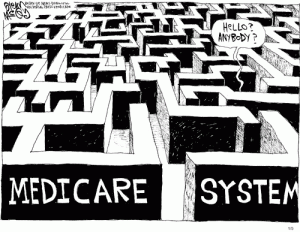By Jack Cumming
Commentators on senior living often discuss the challenges faced by the industry. One of the biggest challenges – right up there with the workforce challenge – is the growing reluctance of many aging people to move in.
Much of that hesitancy is the natural resistance of older people to change. They like their homes and don’t yet anticipate their decline. Others, though, are concerned about the expectation that they sell their homes and invest in entrance fees to live in a facility run by others. They want assurance that CCRCs can be trusted. Robust regulation can provide that assurance of trustworthiness.
Financial Concerns
The concern among residents with the financial condition of their CCRCs came to be enough of a worry that the Washington State Continuing Care Residents Association (WACCRA) successfully lobbied the Washington State legislature to fund a study for the Office of the Insurance Commissioner (OIC) of CCRC regulation.
The deadline for completion of the study was October 1, 2022. There were challenges in finding takers willing to carry out the study. I, however, with input from others, prepared a white paper to address these issues. Central to the effort was a belief that the industry can thrive if it can reassure prospects who fear that their entrance fee payment may not be used for their benefit and that it may not be secure.
The Political Context
In its Request for Proposals (RFP), the OIC alluded to the political context as follows, quoting from the RFP.
“In 2021, Washington’s Continuing Care Residents Association (WACCRA) successfully lobbied the Legislature to fund a study in the 2022 Supplemental Operating Budget that would examine the potential for shifting to a system more like the other states with shared oversight of these entities (Section 139(10), Supplemental Operating Budget (SB 5693 2021- 22), Page 183).
“WACCRA believes the current legal framework does not produce adequate consumer protections for residents of CCRCs in Washington. WACCRA would like CCRCs to be subjected to heightened regulations, present in many other states, such as periodic financial reviews, audited financial statements, and shared regulatory oversight.”
Controversial Questions
Not everyone in the industry believes that more regulation is either desirable or possible. Hence, it is difficult to craft a white paper that is respectful of both the industry’s resistance to oversight and the interests of the residents. That difficulty in finding a balance may be part of why the response to the OIC’s RFP was lukewarm at best.
The promulgation of the RFP has led to fervent discussions of the issues, some of which I have been party to. As might be expected with something so controversial, there are passionate adherents on both sides.
Some residents, particularly, would like to see CCRCs held to standards comparable to those with which insurance companies must comply. Others, predominantly employed by the industry, argue with equal passion that that is neither possible nor necessary since they believe that CCRC bankruptcies are rare.
A common industry view is that it is acceptable for CCRCs to draw down entrance fees to cover debt service and other obligations since the CCRC is expected never to close, i.e., CCRCs are thought to be perpetual. Residents, then hear of CCRC failures, and they worry that they, too, may be impacted.
A central conclusion of the white paper is that such a tolerance for a “negative net asset” balance sheet is not necessary and can be remedied to achieve the assurance that residents want. Potential remedies are suggested.
You need to give no personal contact data to access and download the White Paper. Click here to access the White Paper.








